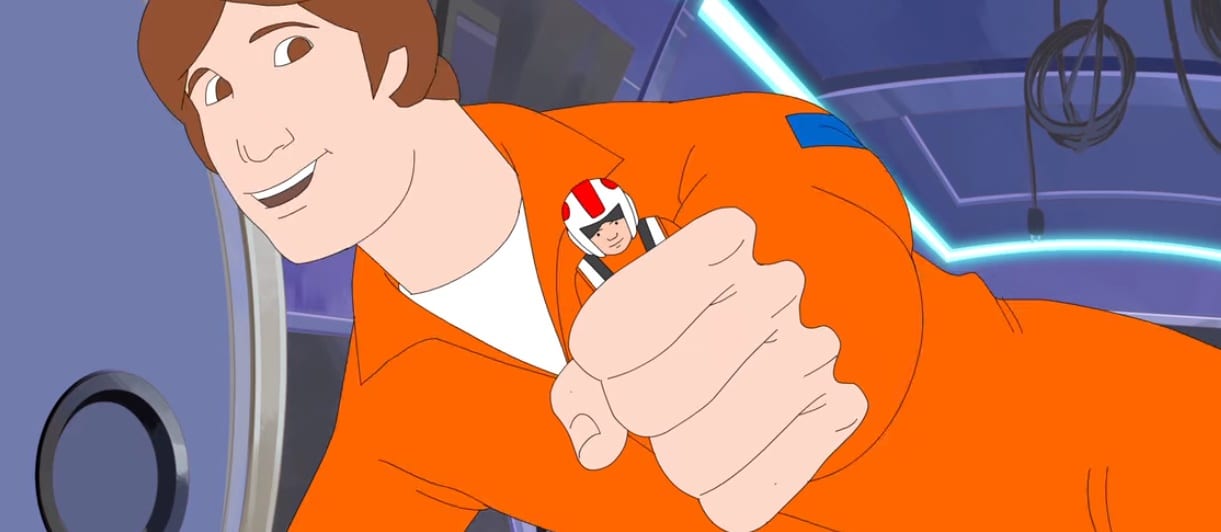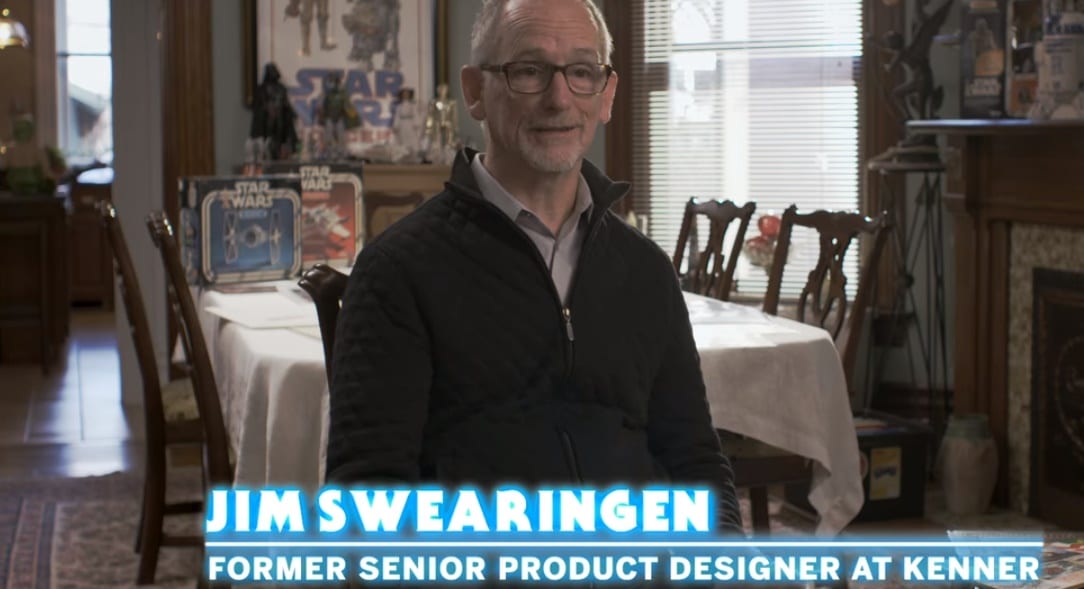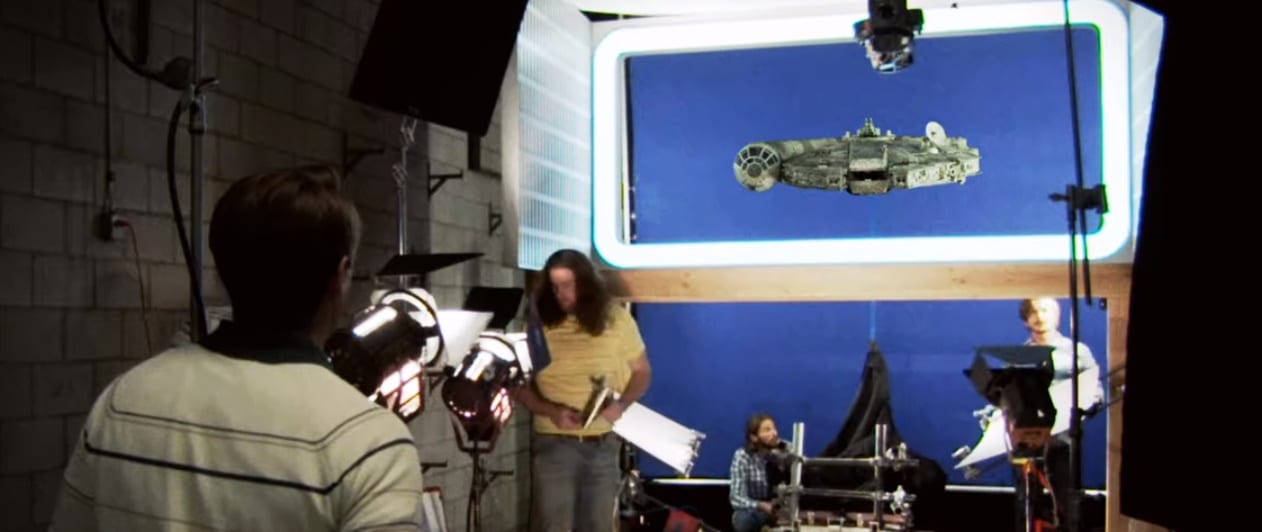‘Little Molded Figures, Big Dreams, and Bigger Grudges: Netflix’s The Toys That Made Us’ is also available in audio-visual format on the 25YL YouTube channel
In late December of 2017 a little series made a splash down on Netflix and then nothing was ever the same in documentary land again. Or perhaps nothing changed at all, the actual results are disputed by all parties. In any case, The Toys That Made Us is a unique look at the toys of our childhoods and the universe that has arisen around them. When I first decided to watch, it was just going to be a fun little distraction to have on when I was working on other projects. But the moment I turned it on, that irresistible jingle and goofy cartoon opening started and I knew I was going to be hooked.
It’s an 8-part documentary series, about the toys that we all know. Plastic creations, that last for generations, and we still cannot let go. Little molded figures that gave us big dreams, we’ll go back in time and behind-the-scenes. It’s The Toys That Made Us, toys that made us, The Toys That Made Us is here. – The Toys That Made Us theme song
That earworm theme song is foundational for the entire series to work. It made me so hyped to watch that I was ready to watch all eight parts that same night. I was legitimately upset when the “eight part documentary series” I was promised turned out to be a four part first season. They released the second season about a year later, but it wasn’t the same, the theme song had lied to us all. Which of course is another part of the fundamental appeal of the series, it isn’t a straightforward story of how these toys came to be, it is more like an example of busting out the action figures you have and playing with them.
The appeal of the series is easy to understand, our culture is pretty materialistically obsessed and the series takes on some of the most beloved and nostalgic pieces of merchandise from the childhoods of the target audience. In the four episode first season they give the stories of the creation of toy lines for Star Wars, Barbie, He-Man, and G.I. Joe. It is a cornucopia of toys and memories from multiple generations, though notably nothing that is of particular interest to today’s children (or really to anyone under 30). In many ways The Toys That Made Us is a piece of pop art masquerading as a documentary series.

The first episode is dedicated to the Star Wars line from Kenner. Which is the perfect place to start the show, even if the toys wouldn’t be the first featured if the episodes were presented chronologically. In the ‘60s and early ‘70s there were a great deal of licensed toys from movies and television shows, but something was different about them. My dad still has his Munsters lunchbox and little Eddie Munster puppet. (Yes, that is a real thing, I’ve played with it myself.) But those toys are just not the same as the incredible cacophony of options on the market now. The Mego toy company was the first to get super into licensing television, movie, and comic toys but, as The Toys That Made Us later documents, they made a crucial mistake by passing on Star Wars.
The entire entertainment industry changed completely, and is still being affected by Star Wars, particularly the marketing behind the movie. There have been hundreds of documentaries about George Lucas’s creation and genius marketing moves in the franchise, including several other documentaries just about the toys that have been released in the past few years. The 2014 film Plastic Galaxy: The Story of the Star Wars Toys is possibly the best known of these and there are some similarities between that documentary and The Toys That Made Us, particularly since many of the major creators and collectors are featured in both.
But this series takes all of that well trod ground and does something pretty spectacular with it. They tell the tale of the tiny Kenner company taking on the monumental task that Mego, Mattel, and Hasbro passed up. But they make it irreverent, goofy, and fun. The Kenner building itself becomes the real star of that first episode, even earning the only real tear-jerking moment of the entire series when the original creators return to the closed and empty office building in Cincinnati where they had created an entire universe out of plastic.
The series creator Brian Volk-Weis, on one of the Blu Ray special features, mentions that his basic idea behind The Toys That Made Us was to use the trappings of documentary as if they were his own action figures. The show certainly has a bunch of creative ways to make this connection explicit. When looking at the whole series with that in mind it is impossible not to notice how this is the case. The toys themselves that play a major role in each episode are constantly being held or arranged by the talking heads, who are usually the original creators. Those creators are often deployed in the same manner as the toys.

Interviews with the toy creators and executives are abundant throughout the series but they always seem to have a sort of plastic sheen to them. The purpose is never to provide what looks like an accurate recreation of what happened, instead they highlight the absurdity of some of the situations the talking heads are describing and really accentuate the comedic tone of the entire series. The most distinctive thing about the series is that irreverent tone.
The scenes are designed to interconnect, with one creator often talking to others even though they are rarely, if ever, actually interviewed together. Even these interviews are like individual pieces from a collection that Volk-Weiss can deploy into any scenario he sees fit, as is often the case with toys. And when one creator starts to bash another, then the fun really begins. It happens surprisingly often—one of the creators feels that they have been wronged in some way and starts to lash out at the others with whom they had worked.
This happens at least once in every episode. Many of these toy makers are holding onto old vendettas and want to use this show in order to air their grievances. Of course, the infighting between the subjects has a different reason in each episode. Often these fights are due to some sort of criminal exploits on the part of one of the participants. The top executives at both Mego and Mattel, in addition to being great personalities, also get to spend some time talking about their time in prison. For those people the success of the toy lines featured in the show led directly to their later issues. All of that makes their interviews on the show a bit more bittersweet, and sometimes combative, than the other creators who look back with rose colored glasses.
Or sometimes one of the creators is just really goofy. This is a through-line of the He-Man episode where the driving force behind the hyper-masculine line is, well, let’s just say he is not the prototype for the action figure. Each of these funny or vindictive interviews is not presented in a straightforward manner though, that would tell a much darker story. Instead through the use of the vivid colors and incredible sound effects it is all presented as a bit of showy, funhouse, weirdness. And ultimately it makes the viewer side with the colorful people on screen.
In order to make this possible, it is really the production design and creative team that have to make it all work. The graphics are bright and colorful with a retro feel that matches the material and helps to set everything up as a specialized universe all its own. The sound effects and music are loud and brash, with quick cuts and record scratches throughout. These sounds remind me of the sound effects that people make for their toys and the amazing thing is, it works. This is particularly evident in the recreations.

The recreations are amazing of their own accord. It’s sort of like watching a cosplay skit at a convention masquerade but the characters are “a bunch of old nerdy guys in the 1970s”. The retro feel is extended into the way the film is processed. It looks cheap, awkward, and wacky which makes it all glorious. There are no pastoral shots of incredible scenery backed by mournful violin music in this one, it is just a rip roaring set of incredible scenes.
I tend to think of The Toys That Made Us as the antithesis to Ken Burns’s The Civil War. The two series could not be more different in subject matter, scope, tone, and production. While The Civil War is serious narration, A-list talent and slow panning over still photos, The Toys That Made Us is a rambunctious, barely functional mess made out of fighting-talking heads, quick cuts, and the most hilarious reenactments I have ever seen.
Going back into the actual content of the series, the second episode on Barbie has all of the same trappings as the Star Wars episode, but with more of a female focus. This is welcome and needed as the biggest complaint about all of the other toy-lines is that they are incredibly focused on the male dominated side of the industry. It is important that boys, girls, and children of all genders know that all toys are for everyone but the series doesn’t really grapple with any of the greater questions that came with gendering the toys. Though the Lego episode does dabble a bit into the fascinating fact that Lego was definitely considered gender neutral for decades before the corporate advertising of the late ’80s made the block set into something seen as only for “boys”.
The Toys That Made Us is certainly not the vehicle for exploring those greater questions, even if I would like to see them put forward. Instead, this is a great docuseries based entirely on the style. It is a case of style over substance most of the time. But that style is a great and ultimately loveable nostalgic rush in the plastic creations that live in the hearts and minds of generations.
Instead of getting a third season, the creative minds have gone on to other projects. Including the direct sequel from the same creative team, The Movies That Made Us, which is pretty good but not nearly as fun or nostalgia inducing. There is something about the toybox aspect of the original series that makes it stand out. There are also hundreds of imitation series that have taken the tone and style and gone their own way.

